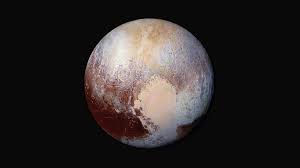JUNO
- Andre Costa
- Jul 25, 2022
- 3 min read
Jupiter is a giant planet and the next closest thing to a star in our solar system. It probably played a
role in shaping our system over time. Despite its large size and brightness, we don't know a lot
about how Jupiter formed or what lies beneath its colorful clouds.. To learn more about this giant,
we have to go closer to it than ever before – on July 5, 2016, the new NASA spacecraft Juno arrives
at Jupiter after five years of traveling throughout the Solar System. Juno is set to explore the secrets
of Jupiter by peeling back its layers. However, it will need to make a high-speed manoeuvre to enter
into a stable orbit around Jupiter.

The Jupiter Orbit Insertion manoeuvre will determine the mission's success on Tuesday, 5 July. If
you gain too much speed, Juno will sling around Jupiter, much like the icy rocks that get too close
to Jupiter are slinging through the solar system. If the speed is too low, Juno will fall towards
Jupiter and burn up in its dense atmosphere.
Dr. Scott Bolton, a space physicist at the Southwest Research Institute, said that Juno will “fly like a
dive-bomber when it enters the atmosphere of Jupiter.” Bolton now says in an astronomy interview:
"We're going in fast and we're going out fast. The speed of this spacecraft is very dangerous, and
we're also spinning around.. This giant solar array spacecraft is cartwheeling through an incredible
magnetic field and radiation belt. It's a bit scary.”

The folks at NASA's Jet Propulsion Laboratory seem to agree. They have put together a very hype-
worthy trailer for the Juno mission, narrated in an epic style. If that doesn't make you nervous/
nervous about Juno, nothing will. That's just the beginning. Exposed to the damaging radiation belts
around Jupiter, Juno can only last so long.. The plan was to collect about a year and a half of data
before Juno's instruments were blown beyond repair.
Searching for Water
Why risk everything on such a dangerous mission? What can we learn about Jupiter that is so
important? Water is essential for life. We don't know how Earth got its water, but it seems likely that
Jupiter played a big role. In the early days of the Solar System, the Sun was surrounded by a huge
disk of gas and dust that gradually began to collapse into the planets we know today.
The sun, high temperature and strong solar wind should have evaporated and blown away the sun's
liquid and icy water to the cooler climates outside the solar system. Much of the material thought to
have come from the sun ended up in Jupiter, Saturn, and the other gas giants, as well as in the cloud
of comets beyond Pluto.

How did Earth end up with oceans? Without Jupiter, all the water in the outer solar system might
have stayed there, but with Jupiter's immense gravity constantly attracting icy comets, many would
have gone back to the inner solar system and landed on Earth, Mars and other rocky planets, which
transport water and organic matter into freshly cooled worlds.

Juno will map the environment around Jupiter to learn more about how it influences particles,
meteors, and solar winds around the Solar System. This information may help us to better
understand how Jupiter influences the formation of life on Earth. Like on Earth, astronomers think
that a water cycle governs the weather and storms on Jupiter. However, so far we haven't found
enough water on Jupiter to be sure.





Comments